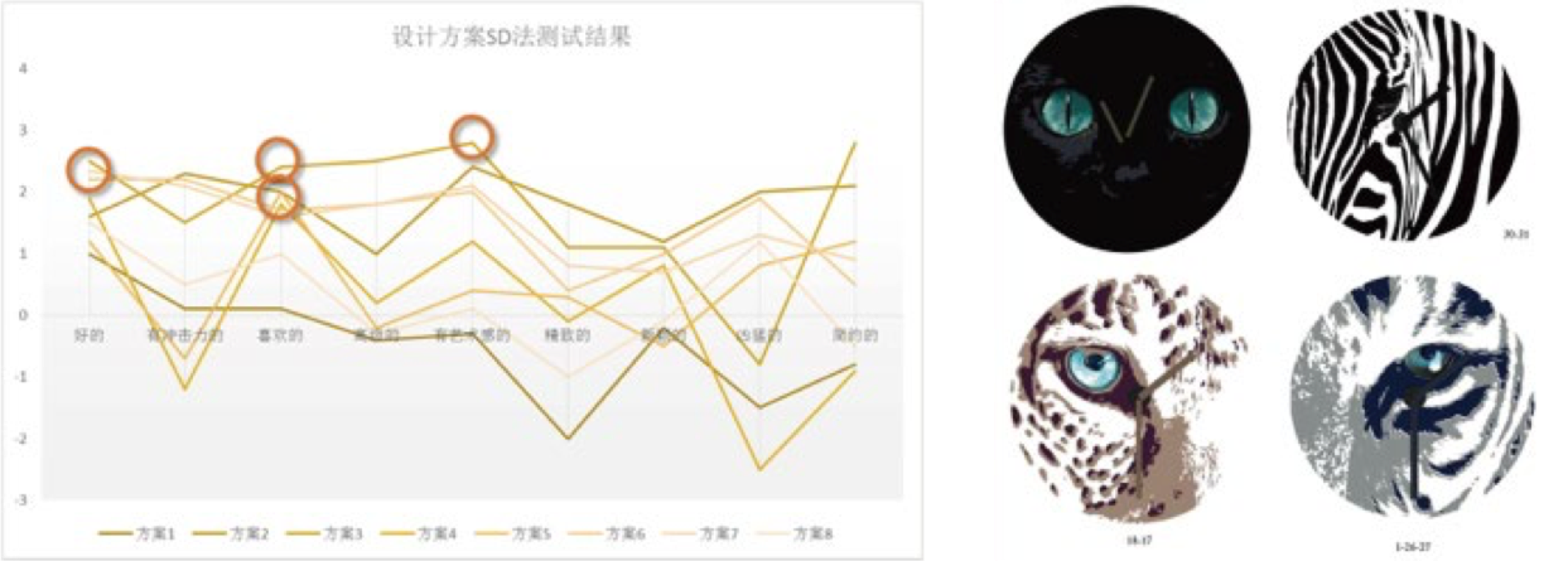
About the project
This clock series design serves as my graduation thesis and is an experimental approach to explore the impact of visceral level design on reflective level thinking. I interpreted this subject into “Use particular visual patterns to enhance people's rational understanding”. For this purpose, I decided to focus on the theme of animal protection and used Eyes as a design language, believing that the imagery of eyes can have a psychological impact on humans and ultimately encourage them to take protective actions.
Project Info
Time
Jan, 2015 - Jun, 2015
Course
Graduation Thesis
Team Size
1 person
Program
Industrial Design, Shanghai Jiao Tong University
Role
Instructor
Dr. Fan Zhang
Design
Xiaoye Zhang
Craft
Xiaoye Zhang
Tools
Software
Illustrator
Materials
Bamboo plates, Lime, Glue, Paint
Ideation
three levels of design
In his book "Emotional Design," Donald Norman outlined three distinct levels of experience that can be elicited by different types of design: Visceral Design, Behavioural Design and Reflective Design.

According to Norman's theory, there is no direct link between the visceral level and the reflective level. My aim was to create a design that bypasses the intermediate behavioral level, allowing the visceral level design to directly affect and engage with the reflective level. I considered the powerful impact of gazing behavior and the eye pattern. As a result, I opted for clocks as the design form, as it requires only gazing behavior and limits the influence of the behavioral level.
My Thesis
How can visceral level design influence reflective level thinking?
The impact of eye imagery on people is significant because of our strong cognitive response to faces, especially the eyes, regardless of whether they are from humans or animals. It is possible that the visceral effect of eye patterns can influence people's reflective-level awareness.

The famous photograph of Project Hope was published in 1991 and immediately drew the attention of the Chinese society, portraying the children's yearning and eagerness through their eyes. Since then, the establishment of around 10,000 Hope Primary Schools has helped over 2 million underprivileged children receive education.

Product showcase




Manufacture
- Put on primer and coatings to make the base




- Design, print, cut, paint and dry




- Draw the eyes and assemble the clocks




test
semantic differential


Results

